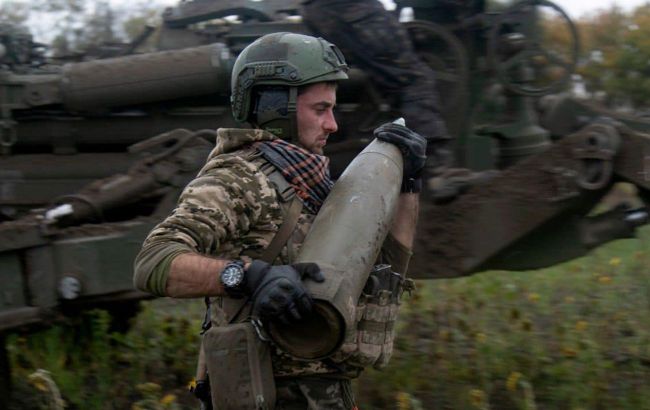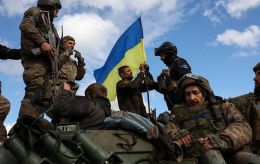ISW explains reasons for active advance of Russian army in Donetsk region
 The Ukrainian Armed Forces find it difficult to counter Russia due to the under-staffing of brigades (photo: facebook.com/MinistryofDefenceUA)
The Ukrainian Armed Forces find it difficult to counter Russia due to the under-staffing of brigades (photo: facebook.com/MinistryofDefenceUA)
The active advancement of Russian forces in the Donetsk region is attributed to the local terrain and the insufficient staffing of Ukrainian Armed Forces brigades, according to a report from the Institute for the Study of War (ISW).
The report highlights that Russian forces' advancement toward Pokrovsk in the Donetsk region is facilitated by the lack of personnel in the Ukrainian Armed Forces and the terrain to the northwest of Avdiivka.
Analysts, however, forecast a slowdown in Russia's offensive operations as the aggressor's troops move towards larger and more urbanized settlements.
Ukrainian military analyst Kostyantyn Mashovets noted that the Defense Forces in the Pokrovsk direction have inferior equipment and protective measures, rendering them currently unable to halt the Russian advance.
He pointed out that delays in providing Western, especially American, military aid have caused setbacks in equipping newly formed Ukrainian units and re-equipping those already engaged in combat.
The ISW report also indicates that the Russian military is exploiting this weakness to gradually gain tactical advantages northwest of Avdiivka. Russian troops are attempting to achieve a limited tactical encirclement of the Defense Forces east of the T0511 (O0544) Ocheretyne - Hrodivka - Myrnohrad road and on the left bank of the Vovcha River.
"Geolocated footage published on August 1 shows that Russian forces have advanced further within Vesele towards the T0511 road, placing the current furthest confirmed Russian advance about 3.5 kilometers from the outskirts of Hrodivka," the report states.
Operational breakthrough by Russia by the end of August
Meanwhile, Russian military bloggers claim that Russian forces are advancing south of Vesele along the railway line and windbreaks towards Serhiivka and Zhelanne (south of Vesele). This could potentially allow the Russian army to encircle Ukrainian troops in this area if they can exploit it effectively.
Both Ukrainian and Russian sources have reported that Russian troops have captured Tymofiivka north of the O0544 road and the Vesele area.
Mashovets described the recent Russian advancement southeast of the O0544 road as a tactical penetration into the Ukrainian positions. He noted that over the past weeks, Russian forces have advanced 6.5 kilometers deep and 7.5 kilometers wide from Sokil to Serhiivka, crossing the Vovcha and Kazennyi Torets rivers (which flow through Prohres-Vovche and Lozuvatske).
The analyst warned that Russian troops are close to achieving an operationally significant breakthrough in the Pokrovsk direction by the end of August.
Situation on the front in the Donetsk region
According to the latest update from the General Staff of the Armed Forces of Ukraine, on August 1, Russian forces conducted 43 assault operations in the Pokrovsk direction.
The enemy is concentrating its efforts in the areas of the settlements of Novooleksandrivka, Prohres, and Zhelanne.
President Volodymyr Zelenskyy has identified the Pokrovsk direction as the current priority for the Russian military operations. He noted that Russian troops can advance in certain sections of the front because the brigades rotating into the front lines are still inadequately equipped.

